Our pets are family members, and we work hard to care for them. A large part of that effort goes to ensuring they remain healthy. It is common knowledge that there are certain foods that dogs and cats cannot eat. And most pet owners are diligent in keeping those foods away from their furry friends. However, it is not just food that can cause your pet trouble. Some plants are also highly toxic to dogs and cats.
The article below explores nine plants toxic to dogs and cats. This list is not exhaustive, but it will give you a starting place to dive into further research. And maybe it will guide you next time you are at the nursery trying to decide on the next plant to bring home.
1. American Holly (Ilex opaca)
When you think about American holly, you are likely conjuring up holiday images. This iconic plant is a symbol of festivity throughout the US. But, it can put a damper on your celebrations if your dog or cat gets into the leaves or berries.
Why Is It Toxic?
American holly contains saponins, which are dangerous for pets to consume.
What Happens?
The poisonous leaves will cause diarrhea and vomiting. Additionally, since the leaves are spiny, they can cause significant gastrointestinal problems and damage.
What Are the Symptoms?
If your four-legged friend gets into American holly, it will cause symptoms such as drooling, lip-smacking, and shaking of the head.
Where Does It Grow?
American holly grows outdoors in USDA Hardiness Zones 5-9. It is native to the eastern and central regions of the United States, so it is more abundant in those areas.
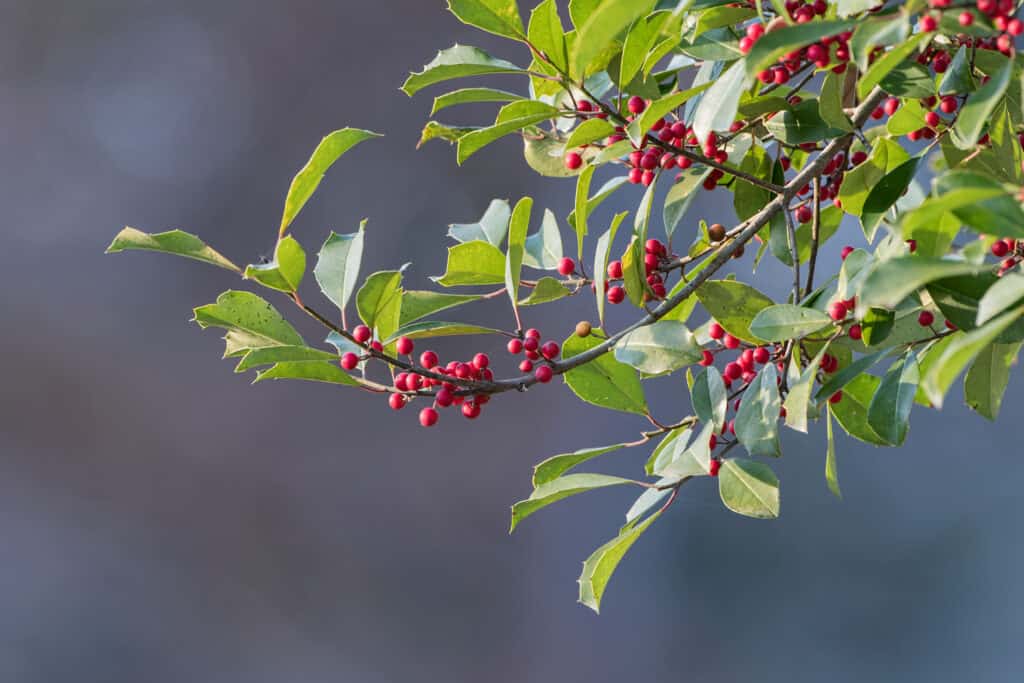
American holly leaves cause significant gastrointestinal trouble for pets.
©Bonnie Taylor Barry/Shutterstock.com
2. Fern Palm (Zamia spp.)
This easy-to-care-for plant is popular in homes and businesses. It adds a lovely touch of nature to nearly any space. However, if you are considering picking one up but have a pet, you may want to reconsider. The fern palm is highly toxic to them.
Why Is It Toxic?
The fern palm has several compounds that are toxic to pets. Those include B-methylamino-l-alanine and cycasin.
What Happens?
If your dog or cat consumes any part of this plant, it will cause gastrointestinal hemorrhaging. Additionally, it may lead to liver failure, and eating only 1 or 2 seeds can be fatal.
What Are the Symptoms?
There is a wide range of symptoms caused by the fern palm. Some symptoms include trembling, vomiting, diarrhea, bloody stool, decreased appetite, increased thirst, weakness, and seizures.
Where Does It Grow?
This tropical plant is native to Central and South America, Mexico, and the West Indies. And it is also found in parts of the southeastern US, such as Florida and Georgia. You may find it outside in USDA Hardiness Zones 10-12.
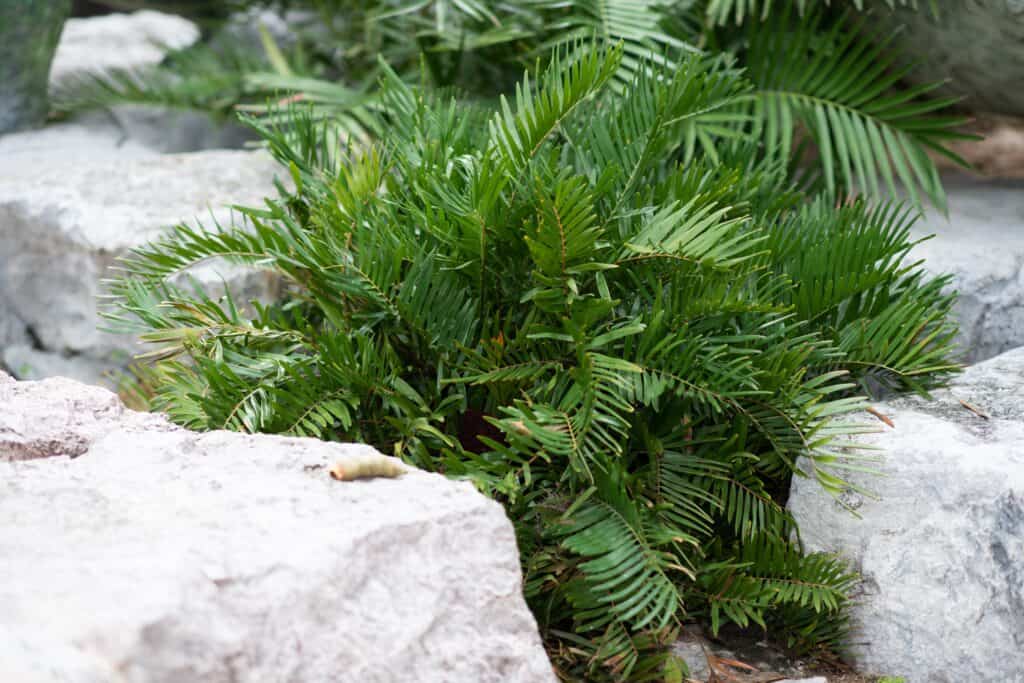
Fern palm leaves are highly toxic to pets.
©Fern plam leaves/Shutterstock.com
3. Jade Plant (Crassula argentea)
Otherwise known as the rubber plant, this lovely succulent is beautiful. The jade plant is even highly attractive to pets, which is a problem due to its toxicity.
Why Is It Toxic?
Researchers are not sure what the toxic principles are.
What Happens?
Should your dog or cat nibble on a jade plant, it will lead to heart trouble, depression, or gastrointestinal problems.
What Are the Symptoms?
Signs your pet got into a jade plant include aggression, lethargy, vomiting, and abdominal pain.
Where Does It Grow?
You may find jade plants outside in USDA Hardiness Zones 10-11. However, they grow well indoors year-round and are popular houseplants.
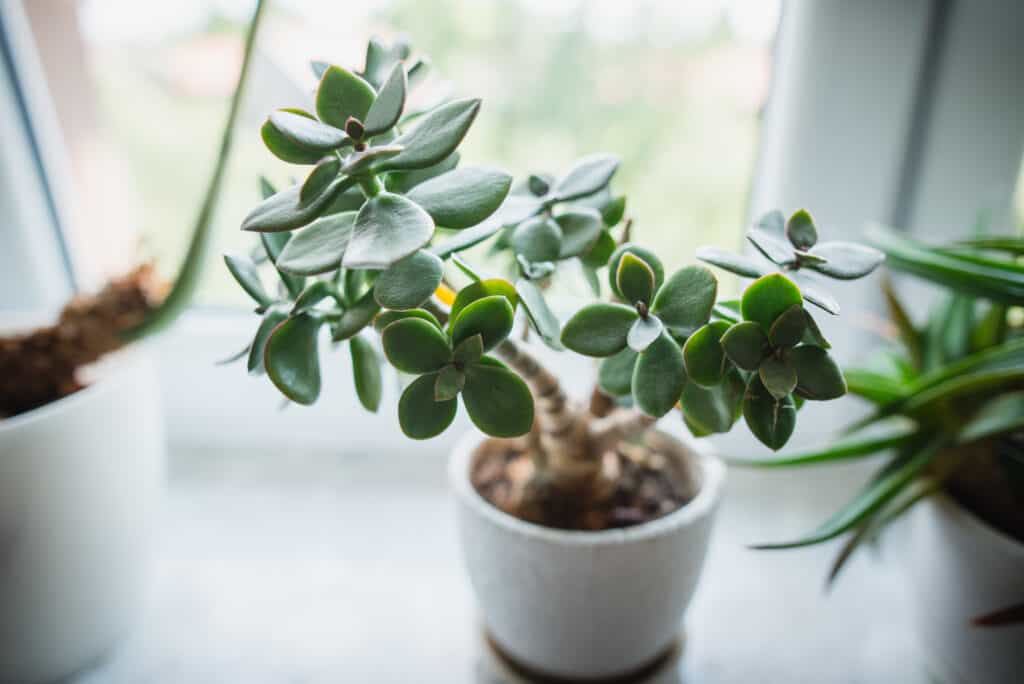
Jade plants cause heart and gastrointestinal trouble in pets.
©Jus_Ol/Shutterstock.com
4. Shatavari (Asparagus densiflorus cv sprengeri)
You may not be familiar with this beautiful plant, but it is increasingly popular as a houseplant in warmer climates. It has a delicate appearance reminiscent of a fern, although it belongs to a completely different plant family. But beware before you bring one of these home, as they are poisonous to dogs and cats (particularly its berries).
Why Is It Toxic?
The plant’s sapogenins are what is problematic for pets.
What Happens?
Shatavari can cause heart issues and gastrointestinal problems when ingested by dogs and cats. The most dangerous part of the plant is its berries. They contain high levels of problematic sapogenins.
What Are the Symptoms?
If your pet eats from the Shatavari plant, you may notice listlessness, seizures, irregular heartbeats, vomiting, and appetite loss.
Where Does It Grow?
While Shatavari is most common in USDA Hardiness Zones 9-11, it will grow year-round in areas with temperatures above 20F.
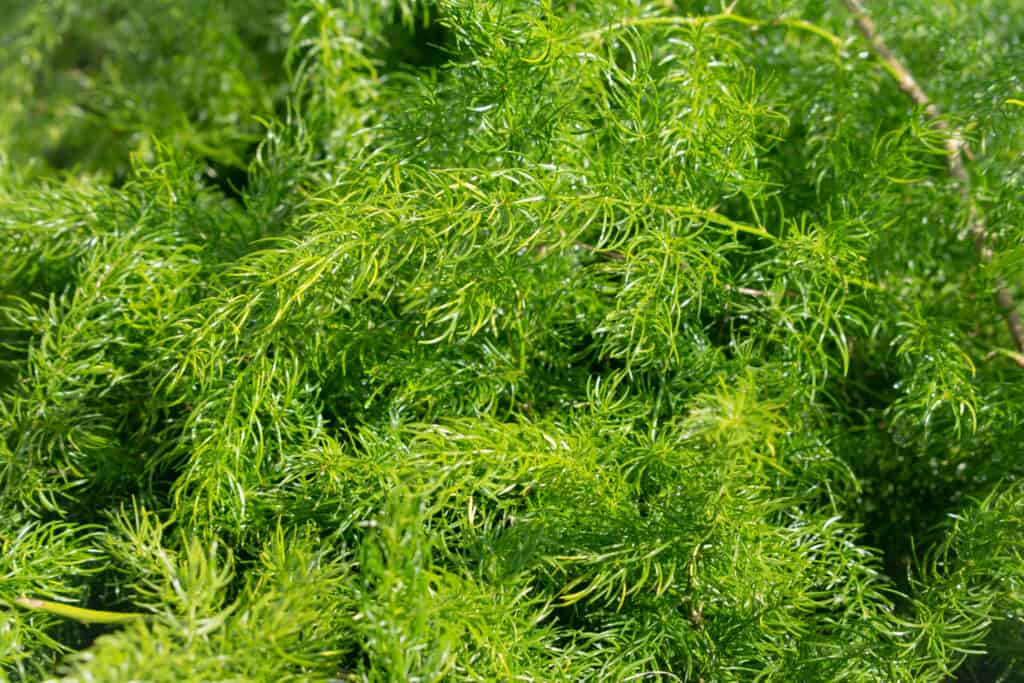
Shatavari leaves and berries are toxic for pets.
©Alchemist from India/Shutterstock.com
5. Geranium (Pelargonium species)
Many people love growing geraniums in containers to brighten their homes or patios. Unfortunately, all geranium species are poisonous to dogs.
Why Is It Toxic?
The compounds in geranium that will make your pets sick are linalool and geraniol.
What Happens?
If your pet ingests geranium, it will experience gastrointestinal trouble and depression.
What Are the Symptoms?
When ingested, geranium will cause symptoms like skin rashes, vomiting, lethargy, loss of appetite, and low blood pressure.
Where Does It Grow?
Geraniums are extremely sensitive to cold weather, so you mostly see them outside in USDA Hardiness Zones 10-11. However, they are very common houseplants.
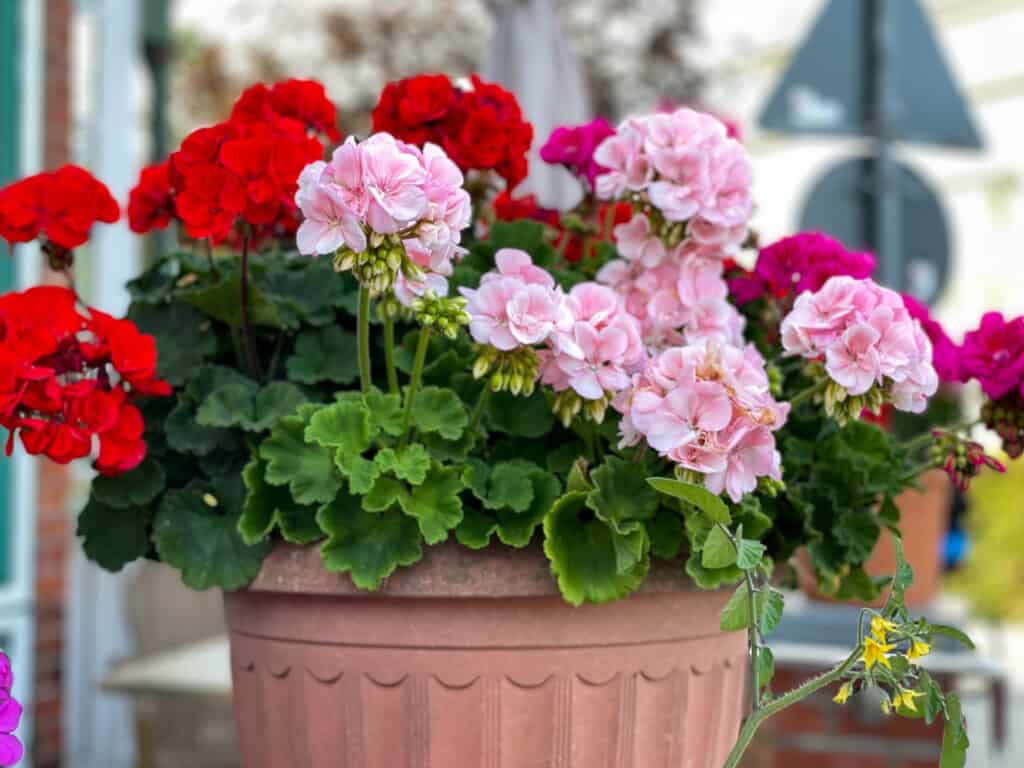
Beautiful geraniums will make your pets quite sick.
©Lapa Smile/Shutterstock.com
6. Daffodil (Narcissus spp)
This beautiful flower brightens up everything around it. But, sadly, it is highly toxic to your furry, four-legged friend.
Why Is It Toxic?
Daffodils contain lycorine and harmful alkaloids.
What Happens?
While the entire plant is poisonous for dogs and cats, the bulb is the worst offender.
What Are the Symptoms?
If your pet eats daffodils, it will experience one or more of the following symptoms: heart problems, convulsions, tremors, severe vomiting, drooling, and respiratory distress.
Where Does It Grow?
While daffodils are not native to the US, they are common in USDA Hardiness Zones 4-8. They are another plant regularly planted in containers to brighten up indoor spaces.
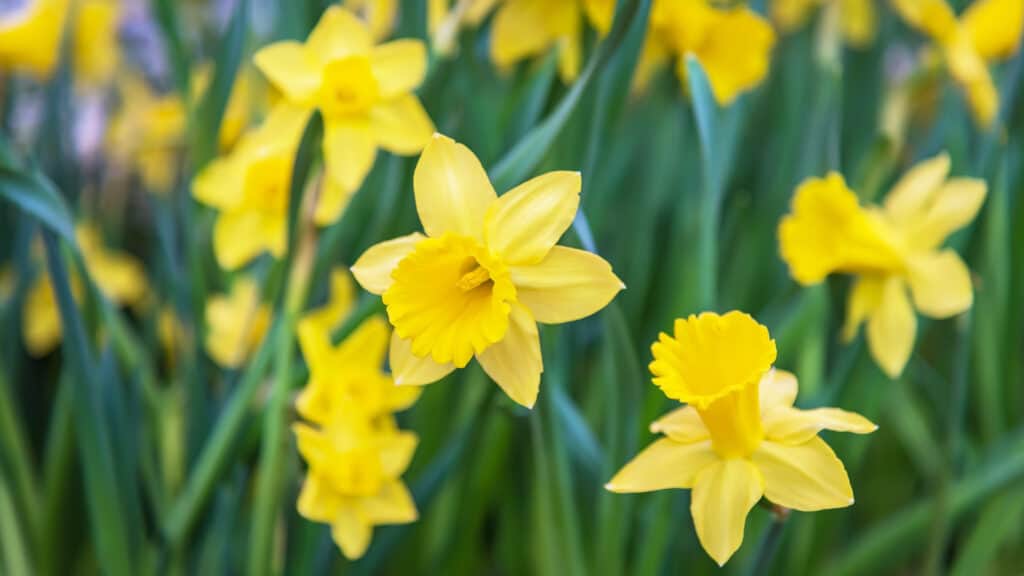
Daffodil bulbs are particularly toxic.
©tonkid/Shutterstock.com
7. Chrysanthemum (Chrysanthemum spp.)
Chrysanthemums are common additions to garden spaces. They also make their way into indoor container gardens. However, pet owners should know that this beautiful flower can harm their furry friends.
Why Is It Toxic?
The beautiful flowers contain harmful constituents, including pyrethrins, lactones, and sesquiterpene.
What Happens?
While eating a chrysanthemum will not kill your dog or cat, it will cause them severe intestinal problems.
What Are the Symptoms?
Watch for drooling, loss of coordination, vomiting, diarrhea, and rashes on your pet’s skin.
Where Does It Grow?
Most chrysanthemum species are hardy in Zones 5-9. However, mums are very common houseplants, and you will regularly see them inside in every zone.
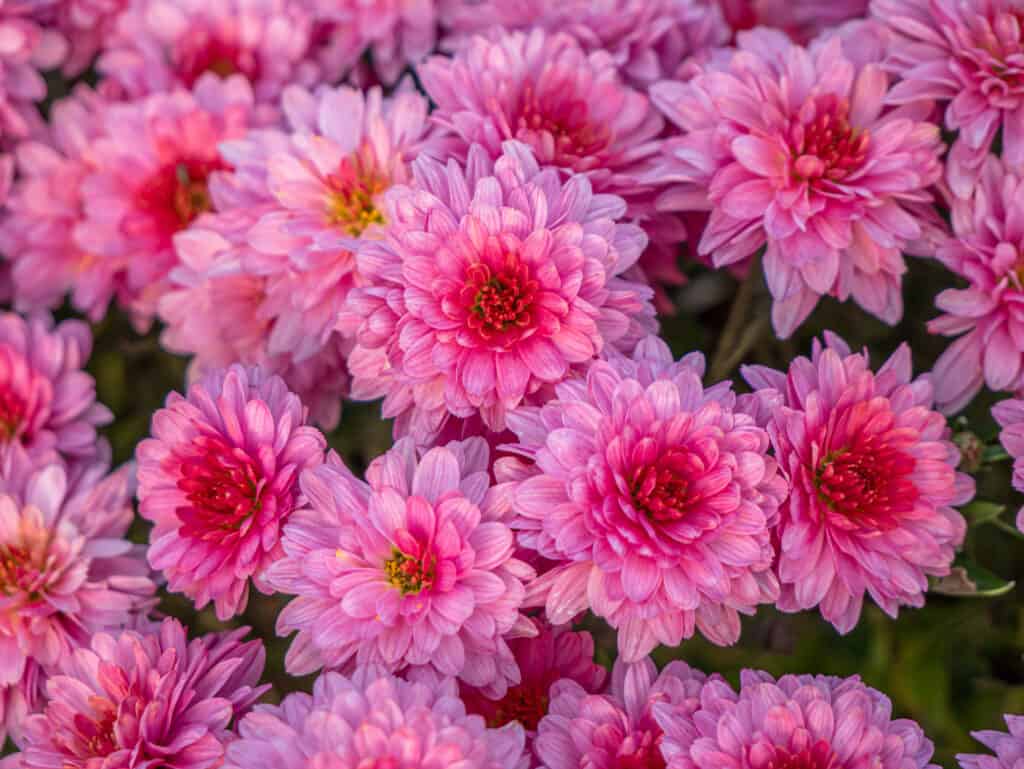
Chrysanthemums contain many harmful constituents.
©Volodymyr Yakovyna/Shutterstock.com
8. Fruit Trees
Growing fruit trees is a worthy goal and will ensure you and your loved ones are well-fed for years to come. But if you have pets, keep them out of your budding orchard. Several varieties of fruit trees will make your pets quite sick, and the pits can also be a choking hazard.
Why Are They Toxic?
The seeds contain toxins and pose a choking hazard.
What Happens?
Thankfully, fruit trees are not lethal for pets. But the seeds contain dangerous toxins that will cause significant gastrointestinal upset.
What Are the Symptoms?
Watch for diarrhea and vomiting if your dog or cat accidentally gets into some dropped fruit.
Where Do They Grow?
You can find fruit trees in nearly every region.
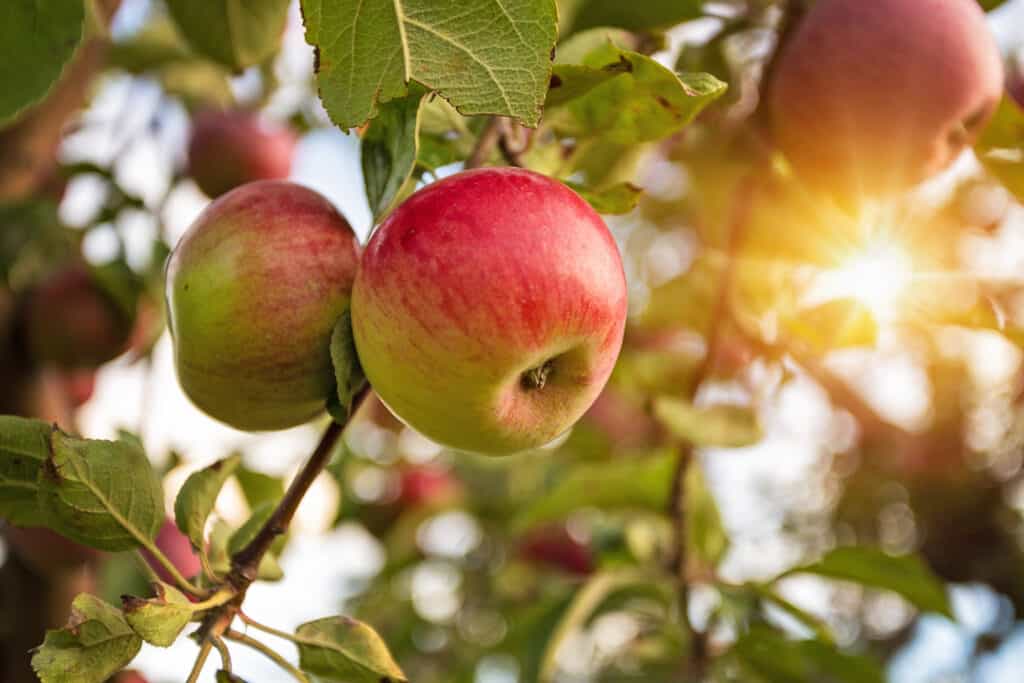
Many fruit seeds are toxic for pets and present a choking hazard.
©Romiana Lee/Shutterstock.com
9. Fleabane (Erigeron speciosus)
Fleabane is a member of the Asteraceae (daisy) family and a popular garden addition. The flowers are an outstanding pest deterrent and are lovely. But be careful where you plant it. Fleabane sap can cause your furry friend some discomfort.
Why Is It Toxic?
Fleabane is considered an irritant.
What Happens?
If your dog or cat gets into the garden and nibbles on fleabane, it may develop skin rashes or gastrointestinal problems.
What Are the Symptoms?
Some of the symptoms of fleabane ingestion include fever, loss of appetite, distended stomach, and shock.
Where Does It Grow?
Fleabane is native to the western and pacific northwestern United States, and you will commonly find it outdoors in these regions. It grows best in USDA Hardiness Zones 4-7.
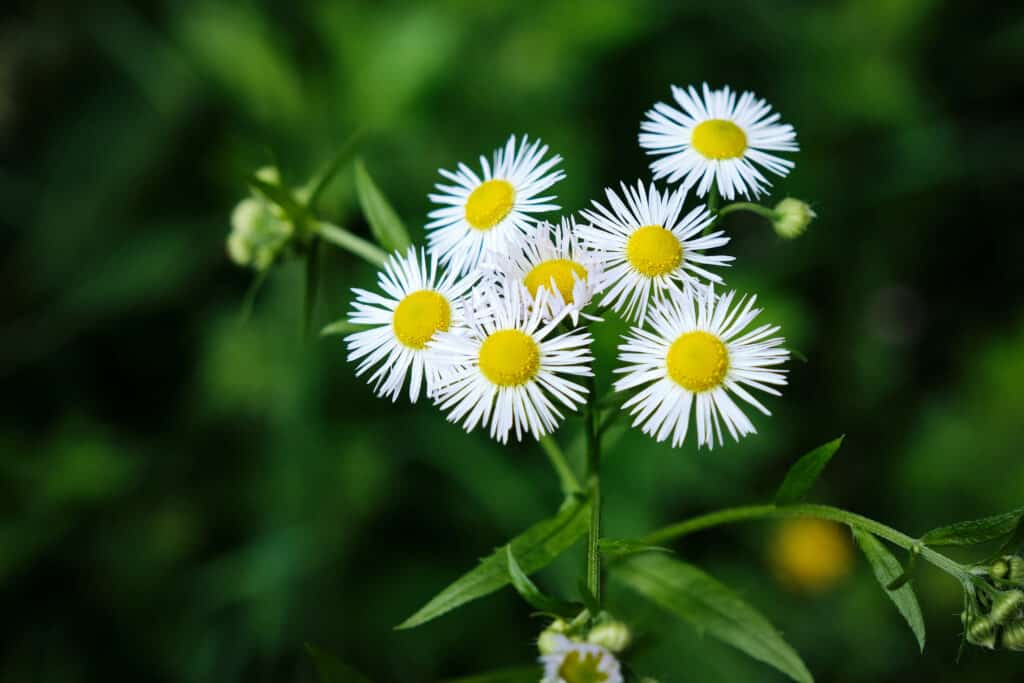
Fleabane flowers will cause some irritation if your pets eat them.
©Erik Koole Photography/Shutterstock.com
The photo featured at the top of this post is © olko1975/Shutterstock.com
Sources
- ASPCA, Available here: https://www.aspca.org/pet-care/animal-poison-control/toxic-and-non-toxic-plants
- American Kennel Club, Available here: https://www.akc.org/expert-advice/home-living/protect-your-pooch-from-poisonous-plants/#:~:text=Shrubs%20That%20Are%20Poisonous%20to%20Dogs&text=Holly%3A%20Varieties%20include%20American%20holly,dog%20away%20from%20any%20variety
- Wag Walking, Available here: https://wagwalking.com/condition/fern-palm-poisoning
- Wag Walking, Available here: https://wagwalking.com/condition/jade-plant-poisoning
- Wag Walking, Available here: https://wagwalking.com/condition/shatavari-poisoning-
- Wag Walking, Available here: https://wagwalking.com/condition/fleabane-poisoning
Thank you for reading! Have some feedback for us? Contact the AZ Animals editorial team.






